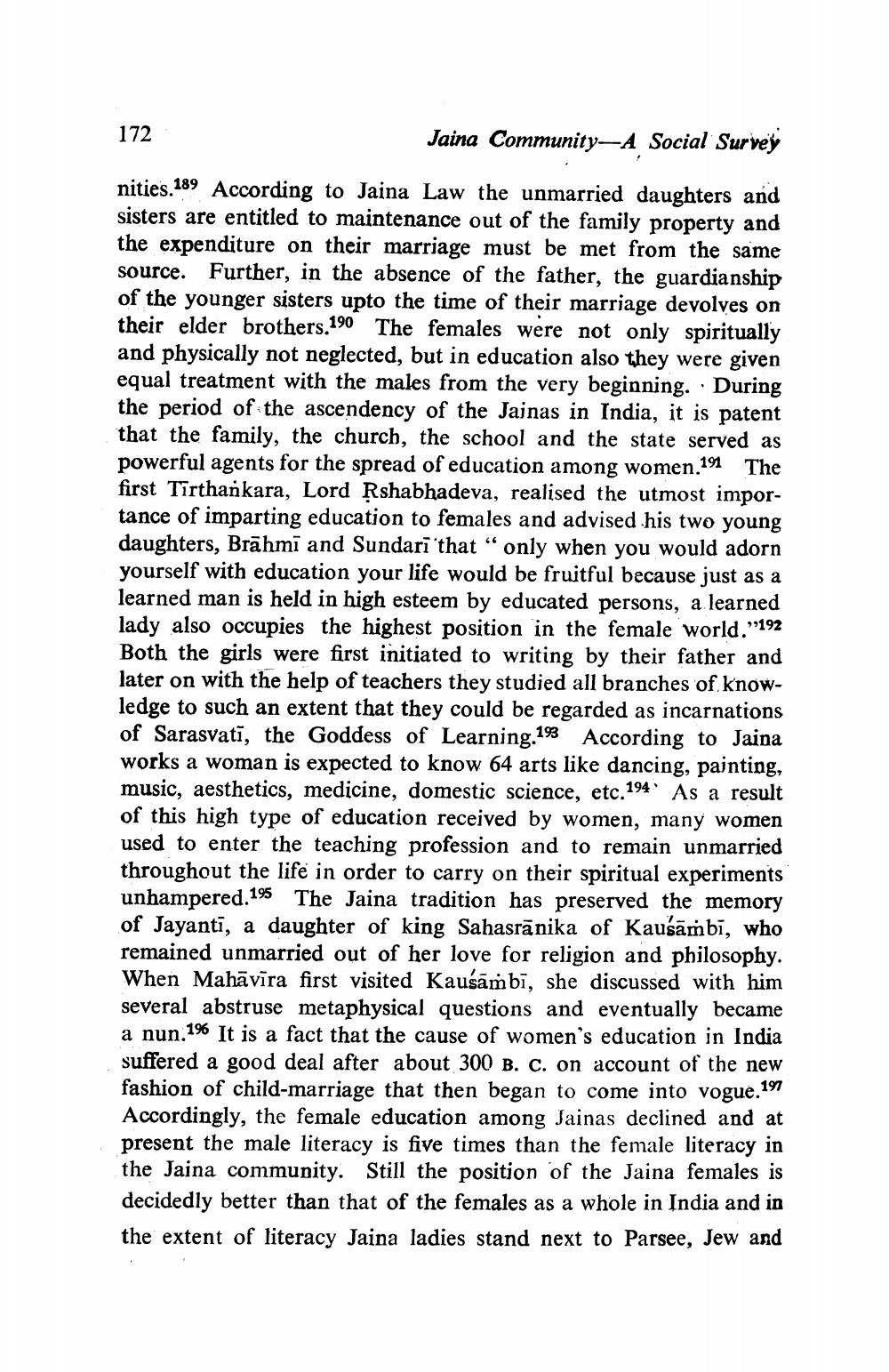________________
172
Jaina Community—A Social Survey
nities.189 According to Jaina Law the unmarried daughters and sisters are entitled to maintenance out of the family property and the expenditure on their marriage must be met from the same source. Further, in the absence of the father, the guardianship of the younger sisters upto the time of their marriage devolves on their elder brothers.190 The females were not only spiritually and physically not neglected, but in education also they were given equal treatment with the males from the very beginning. During the period of the ascendency of the Jainas in India, it is patent that the family, the church, the school and the state served as powerful agents for the spread of education among women.191 The first Tīrthankara, Lord Rshabhadeva, realised the utmost importance of imparting education to females and advised his two young daughters, Brāhmi and Sundari 'that “only when you would adorn yourself with education your life would be fruitful because just as a learned man is held in high esteem by educated persons, a learned lady also occupies the highest position in the female world.”:192 Both the girls were first initiated to writing by their father and later on with the help of teachers they studied all branches of knowledge to such an extent that they could be regarded as incarnations of Sarasvati, the Goddess of Learning.19 According to Jaina works a woman is expected to know 64 arts like dancing, painting, music, aesthetics, medicine, domestic science, etc. 194. As a result of this high type of education received by women, many women used to enter the teaching profession and to remain unmarried throughout the life in order to carry on their spiritual experiments unhampered. 195 The Jaina tradition has preserved the memory of Jayanti, a daughter of king Sahasrānika of Kausāṁbī, who remained unmarried out of her love for religion and philosophy. When Mahāvīra first visited Kausambī, she discussed with him several abstruse metaphysical questions and eventually became a nun.1% It is a fact that the cause of women's education in India suffered a good deal after about 300 B. c. on account of the new fashion of child marriage that then began to come into vogue.19 Accordingly, the female education among Jainas declined and at present the male literacy is five times than the female literacy in the Jaina community. Still the position of the Jaina females is decidedly better than that of the females as a whole in India and in the extent of literacy Jaina ladies stand next to Parsee, Jew and




